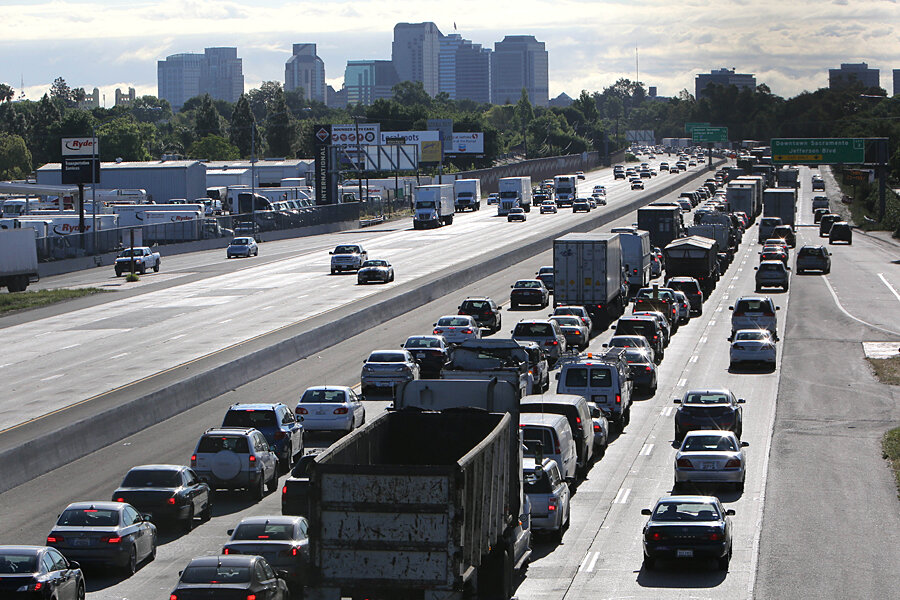Which cities have the most polluted air in America?
Loading...
Los Angeles might be a haven for organic juices, but residents of the city, as well as most Californians living in major metropolitan areas, are drinking up some polluted air, according to the American Lung Association’s most recent “State of the Air” report.
The annual report, released Wednesday, once again gives Los Angeles and other big California metro area poor grades for their air quality. But Golden State residents aren’t alone: almost half of US residents, or about 148 million people, live in counties with air so polluted it poses a health risk, according to the ALA.
The annual report, which is based on data from 2010 to 2012, grades air quality on an “A” to “F” scale and divides pollution into two varieties: ozone pollution, also known as smog; and particle pollution, also known as soot.
The report comes a day after the US Supreme Court voted to uphold the right of the Environmental Protection Agency to regulate air pollution that drifts across state borders.
The ALA’s new report suggests that US air quality has improved since 1970, when the Clean Air Act was passed. But progress in the metro areas with the worst air pollution has been checkered, according to the ALA.
For example, 22 of the 25 metro areas with the biggest ozone pollution problems experienced more days when ozone levels exceeded health standards than they did in the previous ALA survey, which covered the years from 2009 to 2011. Those included Los Angeles, Washington, New York, and Chicago. The hot summers of 2010 and 2012 likely contributed to the heightened ozone levels, which could herald increasing ozone problems if climate change continues at its current rate.
Meanwhile, progress on soot seems more clear-cut. Eighteen of the 25 metro areas with the worst particle pollution levels reached their lowest levels in the 15 years that the ALA has collected data. Los Angeles, for one, has halved particle pollution, and Pittsburgh and Cleveland have also seen progress. The survey credited emissions reductions from coal power plants and a gradual transition to cleaner diesel fuels.
Los Angeles is notable for its progress in both categories of pollution (its ozone levels have been cut by a third during the past 15 years). But it remains the most ozone-polluted metro area in the US, and it comes in third for particle pollution.
Indeed, California metro areas take the top five spots on both “worst” lists. Other polluted metro areas in the state include: Fresno-Madera (the worst offender for annual particle pollution), Visalia-Porterville-Hanford, and Bakersfield.
Appearing at the top end of the "clean" lists are Bangor (Maine), Bismarck (N.D.), Cape Coral-Fort Myers (Fla.), and Salinas (Calif.). That means that those cities saw no days during which either air pollutant reached unhealthful levels, the ALA said.








